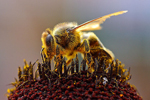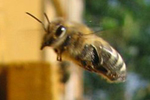On 15 April more than 100 fishermen demonstrated in the streets of Fort de France, the main town on Martinique, in the French West Indies. In January they barricaded the port until the government in Paris allocated €2m ($2.6m) in aid, which they are still waiting for. The contamination caused by chlordecone, a persistent organochlorine pesticide, means their spiny lobsters are no longer fit for human consumption. The people of neighboring Guadeloupe are increasingly angry for the same reason. After polluting the soil, the chemical is wreaking havoc out at sea, an environmental disaster that now threatens the whole economy.
“I’ve been eating pesticide for 30 years so I carry on eating my fish. But what will happen to my grandchildren?” asks Franck Nétri who has fished off the south-east coast of Guadeloupe all his life. Aged 46, he sees little scope for a change of trade. Yet he knows he has no option: the area where fishing has been banned will soon be extended. In 2010 a government decree placed the offshore limit at 500 meters. It will soon be 900 metres.
Chlordecone (aka Kepone) is known to be an endocrine disruptor and was listed as carcinogenic in 1979. The coastline was the last part of the island to be contaminated, as the chemical was gradually washed down by the rivers. Pollution centres on the Basse-Terre area, which specialized in growing bananas for export. As the contamination spread, fishing had to be stopped and freshwater prawn farms closed. The same soon applied to the crabs caught in the mangrove swamps. It remains to be seen which deepwater species will be allowed to be caught in the future.
In the little fishing port at Les Bananiers people are worried and angry. But at 10am there are plenty of customers for the fresh fish on sale, all at €10 a kilo, contaminated or not. The fishermen admit to playing cat-and-mouse with the maritime inspectors, who do not hesitate to cut the lines of their lobster pots. “They want to get rid of us, make room for more tourists,” they complain.
About 70 families depend on fishing for their livelihood here. “There is no hope of improvement,” says Nicolas Diaz, a biologist working for Guadeloupe regional council. “The chlordecone is trapped in the mud on the estuary and is released every time there’s a storm. It will go on for generations.”
This all happened because chlordecone was used to combat banana weevil from 1972 to 1993. The chemical was banned in mainland France in 1990, but an exception was made for overseas territories. The US stopped producing and using the chemical in 1976. It is estimated that chlordecone persists in the soil for 700 years.

Feuiller beach in Guadeloupe. Photo under Creative Commons 3.0.
It was first detected in drinking water on Martinique in 1999, then in sweet potatoes and cassava, but strangely not in bananas. It has since been established that it has infested the whole food chain, including beef and chickens, with high concentrations in eggs. It is even present in the milk of nursing mothers.
The contamination has caused a major upheaval among poor families who derive part of their livelihood from market gardening. After a two-year study to identify the most severely polluted areas, a special team in charge of allotments launched an information campaign in 2009. They have visited the homes of over 10,000 families. “We tell them not to plant root vegetables and to eat less of them. We also explain that they can grow tomatoes and fruit, but they are still skeptical,” says Johann Agrapart, one of the team leaders.
Dr Luc Multigner, an epidemiologist at France’s Institute of Health and Medical Research (Inserm), is studying the chemical’s impact on public health. He leads a team that has been investigating the fertility of banana-plantation workers since 2002. So far no clear effects have been detected but on the other hand research has revealed a substantial increase in the risk of prostate cancer.
The doctors also studied about 1,000 women and their children who were exposed to chlordecone during pregnancy. In partnership with international research teams, they monitored the development of 153 toddlers under seven months. The conclusions published by the journal Environmental Research in 2012 revealed psycho-motor impairment, reduced visual interest in new things and problems with visual memory. A further battery of tests, focusing on 18-month-old children, confirmed the motor issues among boys, according to results published this January by NeuroToxicology.
Somehow it took a very long time for the message to get through to the authorities in Paris. A report on contamination of wildlife on Guadeloupe was filed in 1980, with a copy going to the environment ministry. In 2007 four NGOs and the Confédération Paysanne farmers’ union lodged a legal complaint. Public health prosecutors have finally launched an investigation. “The problem is perhaps not on the same scale as Fukushima,” says Dr Multigner, “but it is comparable in its complexity. It isn’t the sort of crisis you can contain and solve, then move onto the next thing. No, it’s going to last.”
Paris is not denying its responsibility. Several ministries have contributed to two government schemes, initially allocating €33m in 2008-10, which paid for research, publications and checks on local foodstuffs. The second scheme will run to the end of this year, but no one knows what will happen after that.
A few NGOs are still campaigning on issues related to public health and the islands’ remarkable biodiversity. The local community is largely fatalistic and policymakers are either silent or more inclined to defend the interests of banana growers. The French West Indies exports 270,000 tonnes of bananas a year to Europe, almost the islands’ only export.
Original Post: Guadeloupe and Martinique threatened as pesticide contaminates food chain
Related articles
U.S. loses nearly a third of its honey bees this season

(05/09/2013) Nearly a third of managed honeybee colonies in America died out or disappeared over the winter, an annual survey found on Wednesday. The decline—which was far worse than the winter before—threatens the survival of some bee colonies. The heavy losses of pollinators also threatens the country’s food supply, researchers said. The US Department of Agriculture has estimated that honeybees contribute some $20bn to the economy every year.
Europe bans pesticides linked to bee collapse
(04/29/2013) The EU has banned three neonicotinoid pesticides (imidacloprid, clothianidin and thiamethoxam) linked to the decline of bees for two years. The ban will apply to all flowering crops, such as corn, rape seed, and sunflowers. The move follows a flood of recent studies, some high-profile, that have linked neonicotinoid pesticides, which employ nicotine-like chemicals, to the widespread decline of bees seen both in Europe and North America.

(04/10/2013) New Zealand’s Department of Conservation (DOC) is facing a backlash over plans to aerially drop a controversial poison, known as 1080, over the habitat of two endangered, prehistoric, and truly bizarre frog species, Archey’s and Hochsetter’s frogs, on Mount Moehau. Used in New Zealand to kill populations of invasive mammals, such as rats and the Australian long-tailed possum, 1080 has become an increasingly emotive issue in New Zealand, not just splitting the government and environmentalists, but environmental groups among themselves. Critics allege that the poison, for which there is no antidote, decimates local animals as well as invasives, while proponents say the drops are the best way to control invasive mammals that kill endangered species like birds and frogs and may spread bovine tuberculosis (TB).
Is it the end for Britain’s hedgehogs?
.150.jpg)
(03/28/2013) As hedgehogs all over the United Kingdom wake up from their winter hibernation, activists will be carefully counting their hogs. Every year, the hedgehog population in Britain’s rural towns declines by an estimated 5 percent. But between 2011 and 2012, a survey conducted by the People’s Trust for Endangered Species (PTES), a UK-based animal activism group, saw the country’s European hedgehog (Erinaceus europaeus) population fall a dismal 32 percent.
Common pesticides disrupt brain functioning in bees
(03/27/2013) Exposure to commonly used pesticides directly disrupts brain functioning in bees, according to new research in Nature. While the study is the first to record that popular pesticides directly injure bee brain physiology, it adds to a slew of recent studies showing that pesticides, especially neonicotinoids, are capable of devastating bee hives and may be, at least, partly responsible for on-going Colony Collapse Disorder (CCD).
Planet organic: achieving sustainable food security and environmental gains
(03/19/2013) The global farmland area certified organic has expanded more than threefold to 37 million hectares since 1999, according to new research conducted by the Worldwatch Institute. The Institute argues that organic farming has the potential to contribute to sustainable food security by improving nutrition intake and sustaining rural livelihoods, while reducing vulnerability to climate change and enhancing biodiversity.
EU pushes ban on pesticides linked to bee downfall

(02/05/2013) Following a flood of damning research on the longterm impact of neonicotinoid pesticides on bee colonies, the EU is proposing a two year ban on the popular pesticides for crops that attract bees, such as corn, sunflower, oil seed rape, cotton. The proposal comes shortly after European Food Safety Authority (EFSA) released a report that found neonicotinoid pesticides posed a “number of risks” to bees.
Popular pesticides kill frogs outright

(01/28/2013) Commonly used agrochemicals (pesticides, fungicides and herbicides) kill frogs outright when sprayed on fields even when used at recommended dosages, according to new research in Scientific Reports. Testing seven chemicals on European common frogs (Rana temporaria), the scientists found that all of them were potentially lethal to amphibians. In fact, two fungicides—Headline and Captain Omya—wiped out the entire population of frogs at the recommended dosage. The study warns that agricultural chemicals could be having a large-scale and largely unrecorded impact on the world’s vanishing amphibians.
New study adds to evidence that common pesticides decimating bee colonies

(10/24/2012) The evidence that common pesticides may be partly to blame for a decline in bees keeps piling up. Several recent studies have shown that pesticides known as “neonicotinoid” may cause various long-term impacts on bee colonies, including fewer queens, foraging bees losing their way, and in some cases total hive collapse. The studies have been so convincing that recently France banned the use of neonicotinoid pesticides. Now a new study finds further evidence of harm caused by pesticides, including that bees who are exposed to more than one chemical, i.e. neonicotinoid and pyrethroid, were the most vulnerable.